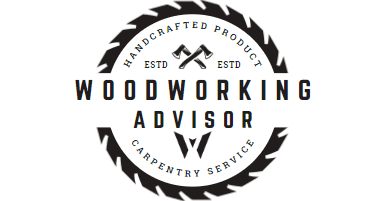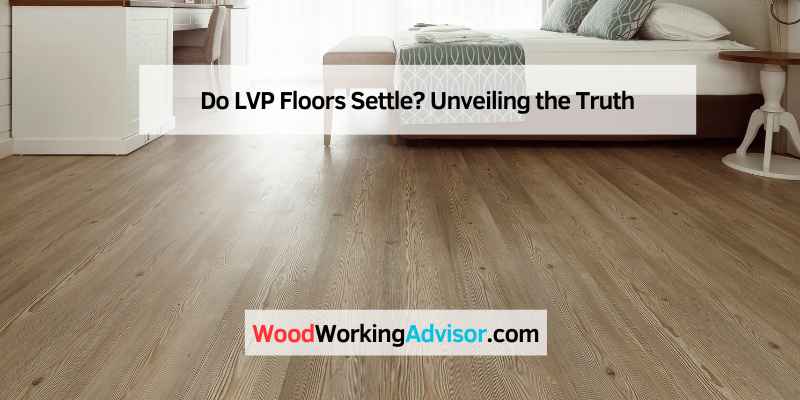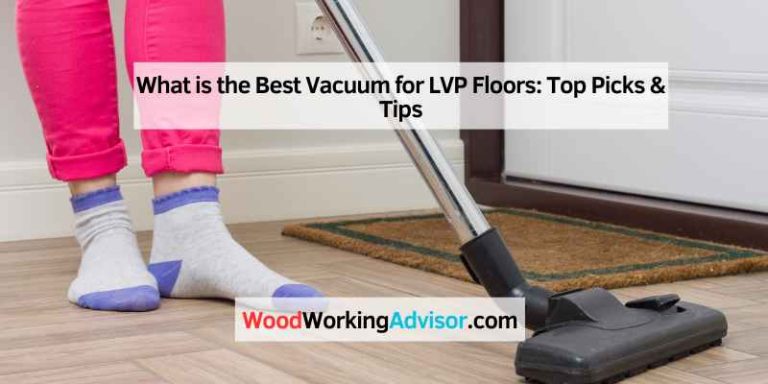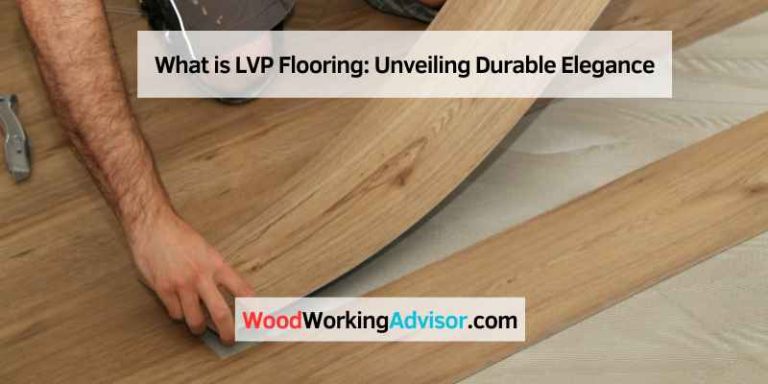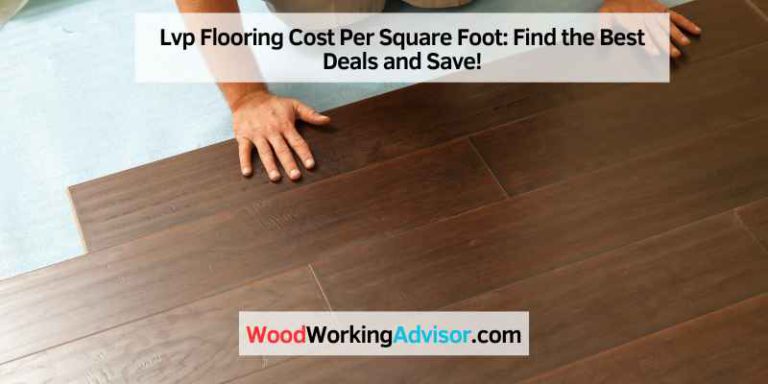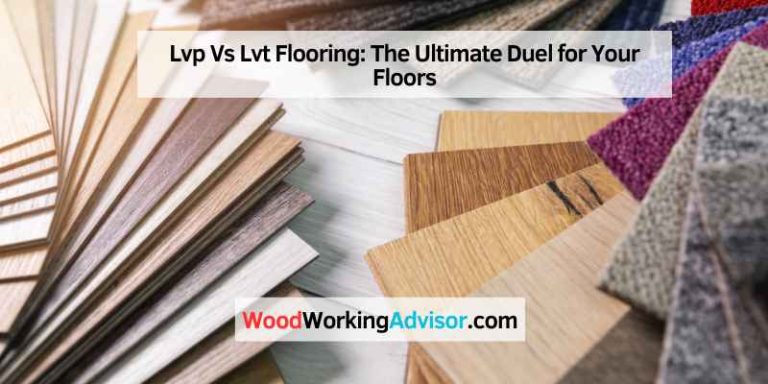Do LVP Floors Settle? Unveiling the Truth
LVP floors do not settle like traditional hardwood floors. They may, however, show minor expansion or contraction.
Luxury Vinyl Plank (LVP) flooring offers a durable, water-resistant option for modern homes. It’s designed to mimic the appearance of hardwood, providing a stylish look without the high maintenance. Homeowners appreciate its ease of installation and versatility in various rooms, including kitchens and bathrooms.
This type of flooring is known for its stability, but like any material, it can react to changes in temperature and humidity. Proper installation and acclimatization help minimize these effects. Overall, LVP floors provide an excellent balance of aesthetics and functionality, making them a popular choice for many homeowners.
Introduction To Lvp Flooring
LVP flooring, or Luxury Vinyl Plank flooring, is a popular choice for modern homes. It’s known for its durability, affordability, and realistic wood-look design. LVP flooring has become a staple in both residential and commercial spaces.
What Is Lvp Flooring?
LVP flooring is a type of vinyl flooring that mimics the look of natural wood. It consists of multiple layers, including a wear layer, a design layer, and a backing layer. The wear layer provides protection, while the design layer gives it the wood-like appearance. The backing layer adds stability and support.
| Layer | Function |
|---|---|
| Wear Layer | Protects against scratches and stains |
| Design Layer | Gives the floor its wood-like appearance |
| Backing Layer | Provides stability and support |
Popularity And Trends
LVP flooring is gaining popularity due to its ease of installation and low maintenance. Homeowners appreciate its water-resistant properties, making it ideal for kitchens and bathrooms. It’s also available in a wide variety of colors and styles, allowing for versatile design options.
- Easy to install
- Low maintenance
- Water-resistant
- Variety of colors and styles
Current trends show a preference for wider planks and lighter color tones. These options create a spacious and airy feel in any room. People also opt for textured finishes that enhance the realistic look of wood.
- Wider planks
- Lighter color tones
- Textured finishes
Composition And Durability Of Lvp
LVP floors, made from layers of PVC, offer remarkable durability. These floors can settle over time, especially with heavy foot traffic.
Vinyl plank flooring, also known as LVP (Luxury Vinyl Plank), is a popular choice for modern homes. It offers affordable, stylish, and durable flooring solutions. Understanding its composition and durability helps in making the right choice for your home.
Materials Used In Lvp
LVP consists of multiple layers, each contributing to its strength and appearance.
- Wear Layer: This top layer protects against scratches, stains, and wear. It is transparent and adds to the floor’s durability.
- Decorative Layer: Beneath the wear layer, this layer features the printed design. It mimics wood, stone, or other materials.
- Core Layer: The core provides stability and strength. It is usually made from PVC (polyvinyl chloride).
- Backing Layer: This bottom layer adds support and sometimes includes a cushioning underlayment.
Lifespan And Wear Resistance
LVP flooring is known for its longevity and resilience.
- Lifespan: High-quality LVP can last up to 25 years or more. This depends on the wear layer’s thickness and quality.
- Wear Resistance: The wear layer’s thickness, measured in mils, affects durability. Higher mils mean more resistance to scratches and dents.
| Wear Layer Thickness | Durability |
|---|---|
| 6-12 mils | Suitable for light traffic areas |
| 12-20 mils | Ideal for moderate traffic areas |
| 20+ mils | Best for high traffic areas |
LVP’s composition and durability make it an excellent choice for various rooms. Its layers work together to provide a sturdy, long-lasting, and attractive floor.
Settling Concerns With Lvp Floors
Luxury Vinyl Plank (LVP) floors are popular for their durability and affordability. Yet, many worry about whether LVP floors settle over time. Let’s uncover the truth behind these concerns.
Common Myths
There are several myths about LVP floors settling. Here are some of the most common:
- LVP floors warp easily: Many believe that LVP floors will bend or warp quickly.
- Gaps will appear: Some think that gaps will form between the planks as they settle.
- Frequent repairs needed: There’s a belief that settled floors will need constant fixing.
Realities Of Lvp Settling
It’s important to know the realities of LVP settling. Here is the truth:
- Minimal Warping: LVP floors are designed to resist warping. They can handle changes in temperature and humidity.
- Proper Installation Prevents Gaps: Correct installation ensures that gaps do not form. Always follow the manufacturer’s guidelines.
- Durable and Low Maintenance: LVP floors are sturdy. They need little maintenance and rarely require repairs.
| Myth | Reality |
|---|---|
| LVP floors warp easily | LVP floors resist warping |
| Gaps will appear | Proper installation prevents gaps |
| Frequent repairs needed | LVP floors are low maintenance |
Understanding these points helps make informed choices about LVP floors. They are an excellent option for many homes. Proper care and installation ensure they stay in top condition.
Installation Factors Affecting Lvp Floors
Luxury Vinyl Plank (LVP) floors are popular for their durability and aesthetic appeal. However, the installation process plays a crucial role in their performance. Understanding the installation factors can help ensure your LVP floors remain in pristine condition.
Proper Installation Techniques
Proper installation is essential for the longevity of LVP floors. Following the manufacturer’s guidelines ensures a smooth and durable floor.
- Subfloor Preparation: The subfloor must be clean, dry, and level. Any debris or moisture can cause issues.
- Acclimation: LVP planks should acclimate to the room’s temperature and humidity for at least 48 hours before installation. This prevents expansion or contraction after installation.
- Expansion Gaps: Leave expansion gaps around the perimeter. This allows the floor to expand and contract with temperature changes.
- Proper Underlayment: Using the right underlayment can reduce noise and provide a smoother surface.
Common Installation Mistakes
Avoiding common mistakes during installation can save time, money, and frustration.
- Skipping Subfloor Preparation: Neglecting to clean or level the subfloor can lead to uneven floors.
- Ignoring Acclimation: Installing planks without acclimation can cause gaps or buckling.
- Incorrect Measurements: Poor measurements can result in wasted materials and ill-fitting planks.
- Overlooking Expansion Gaps: Not leaving gaps can cause the floor to buckle.
- Using Wrong Adhesives: Using incorrect adhesives can damage the planks.
By paying attention to these installation factors, you can enjoy beautiful and durable LVP floors for many years.
Environmental Factors And Lvp Settling
Luxury Vinyl Plank (LVP) floors are a popular choice for many homes. Understanding the environmental factors that cause LVP floors to settle is essential. These factors can impact the longevity and appearance of your flooring.
Temperature And Humidity Effects
Temperature and humidity play a crucial role in the behavior of LVP floors. High temperatures can cause the planks to expand. Conversely, low temperatures can make them contract.
Humidity levels also affect LVP floors. High humidity can cause the planks to absorb moisture and swell. Low humidity can lead to the planks losing moisture and shrinking. Maintaining a consistent environment helps minimize these effects.
| Temperature | Effect on LVP Floors |
|---|---|
| High | Expansion |
| Low | Contraction |
| Humidity | Effect on LVP Floors |
|---|---|
| High | Swelling |
| Low | Shrinking |
Seasonal Changes And Floor Behavior
Seasonal changes can also impact LVP floors. During the summer, higher temperatures and humidity levels can make the floors expand. In winter, lower temperatures and dry air can cause them to contract.
These changes can cause gaps or buckling in your flooring. It’s important to allow for expansion and contraction when installing LVP floors. This helps prevent damage over time.
- Summer: High temperature and humidity cause expansion.
- Winter: Low temperature and dry air cause contraction.
By understanding these factors, you can better care for your LVP floors. This ensures they remain beautiful and functional for years.
Maintenance Tips For Lvp Floors
Luxury Vinyl Plank (LVP) floors are popular for their durability and beauty. They require proper care to stay in top condition. Follow these maintenance tips to keep your LVP floors looking great for years.
Regular Cleaning Routines
Keeping your LVP floors clean is essential. Regular cleaning helps prevent dirt and grime build-up.
- Sweep daily: Use a soft-bristle broom to remove dust and dirt.
- Vacuum weekly: Use a vacuum with a soft brush attachment.
- Mop monthly: Use a damp mop and a mild cleaner. Avoid soaking the floors.
Avoid using harsh chemicals or abrasive tools. They can damage the surface of your LVP floors.
Preventing And Addressing Settling
LVP floors can settle over time. Preventing and addressing settling ensures your floors stay smooth and even.
| Preventive Measures | Addressing Settling |
|---|---|
| Install correctly: Ensure proper installation to prevent gaps and uneven surfaces. | Identify gaps: Look for gaps or uneven areas regularly. |
| Control humidity: Maintain a consistent indoor humidity level. | Fix gaps: Use floor repair kits to fill gaps. |
| Use furniture pads: Place pads under heavy furniture to avoid dents. | Consult professionals: Seek expert help for significant settling issues. |
These steps help keep your LVP floors in great shape. Regular maintenance ensures longevity and beauty.
Troubleshooting Lvp Floor Issues
Luxury Vinyl Plank (LVP) floors are known for their durability and aesthetics. But they can sometimes show issues. One common problem is settling. This section will help you troubleshoot LVP floor issues effectively.
Identifying Settling Signs
Settling signs in LVP floors can be subtle. Look for gaps between the planks. These gaps can indicate the floor has settled. Check for uneven surfaces. Use a level tool to spot any uneven areas. Listen for creaking sounds. Walking on settled floors might produce creaks. Feel for soft spots. These spots can show that the floor is not stable. Visually inspect the edges. Edges that lift up can be a sign of settling.
When To Call A Professional
Some settling issues need expert help. Call a professional if the floor feels unstable. This can be a serious safety concern. Seek help if gaps are wider than a quarter inch. Large gaps might indicate structural problems. Contact a specialist if you see water damage. Moisture can cause the floor to settle. Get professional advice if you notice multiple issues. Multiple symptoms might need a comprehensive solution.
| Settling Sign | Action Needed |
|---|---|
| Gaps between planks | Measure and monitor the gaps |
| Uneven surfaces | Use a level tool to check |
| Creaking sounds | Identify the noisy areas |
| Soft spots | Mark and avoid those spots |
| Edges lifting up | Inspect the affected areas |
Regularly check for these signs to maintain your LVP floors. Early detection can save money and hassle.
The Future Of Lvp Flooring
Luxury Vinyl Plank (LVP) flooring has transformed the flooring industry. It offers durability, aesthetics, and affordability. As we look ahead, the future of LVP flooring promises exciting advancements. These will change how we think about and use this versatile flooring option.
Innovations In Flooring Technology
Technological advancements are at the forefront of the future of LVP flooring. Here are some key innovations:
- Improved Durability: New manufacturing processes enhance the durability of LVP floors. These floors can withstand heavy foot traffic and resist scratches better.
- Enhanced Aesthetics: Advanced printing technology allows for more realistic wood and stone designs. This means LVP floors look more like natural materials.
- Eco-Friendly Options: Manufacturers are developing more sustainable LVP options. This includes using recycled materials and creating floors that are easier to recycle.
- Waterproof Technology: Many new LVP products are 100% waterproof. This makes them ideal for kitchens, bathrooms, and basements.
Evolving Consumer Preferences
Consumer preferences are also shaping the future of LVP flooring. Here are some trends:
- Health and Wellness: Consumers want floors that are safe and non-toxic. LVP manufacturers are responding with low-VOC and phthalate-free products.
- Customization: Personalized design options are becoming popular. Consumers can now choose from a wider range of colors, patterns, and textures.
- Ease of Installation: DIY-friendly LVP options are on the rise. Click-lock and loose-lay installations make it easy for homeowners to install their floors.
- Smart Homes: The integration of smart technology in flooring is gaining traction. This includes features like temperature control and built-in sensors.
The future of LVP flooring is bright, with technology and consumer preferences driving innovation. This will lead to even better and more versatile flooring options for homes and businesses.
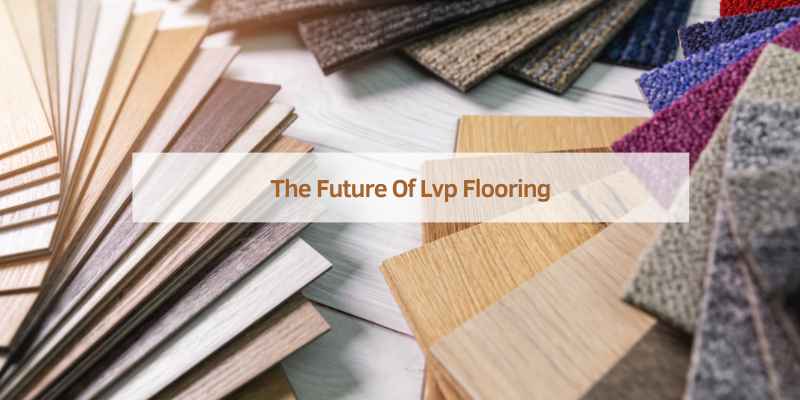
Frequently Asked Questions
How Long Does It Take For Lvp Flooring To Settle?
LVP flooring typically takes 24 to 48 hours to settle. Ensure proper acclimation before installation for best results.
How Long Does A Floating Floor Take To Settle?
A floating floor typically takes 24 to 48 hours to settle. Ensure the subfloor is clean and level.
Why Is My Lvp Not Laying Flat?
Your LVP may not lay flat due to uneven subfloor, debris, or improper acclimation. Ensure the subfloor is clean and level.
Is It Normal For Vinyl Plank Flooring To Lift?
No, it’s not normal for vinyl plank flooring to lift. It can indicate improper installation or moisture issues. Ensure proper subfloor preparation and moisture control to prevent this problem.
Conclusion
LVP floors offer durability and style, but they can settle over time. Proper installation minimizes settling issues. Regular maintenance keeps them looking new. Choose LVP for a long-lasting, beautiful flooring solution. Enjoy peace of mind with this versatile option for any room in your home.
